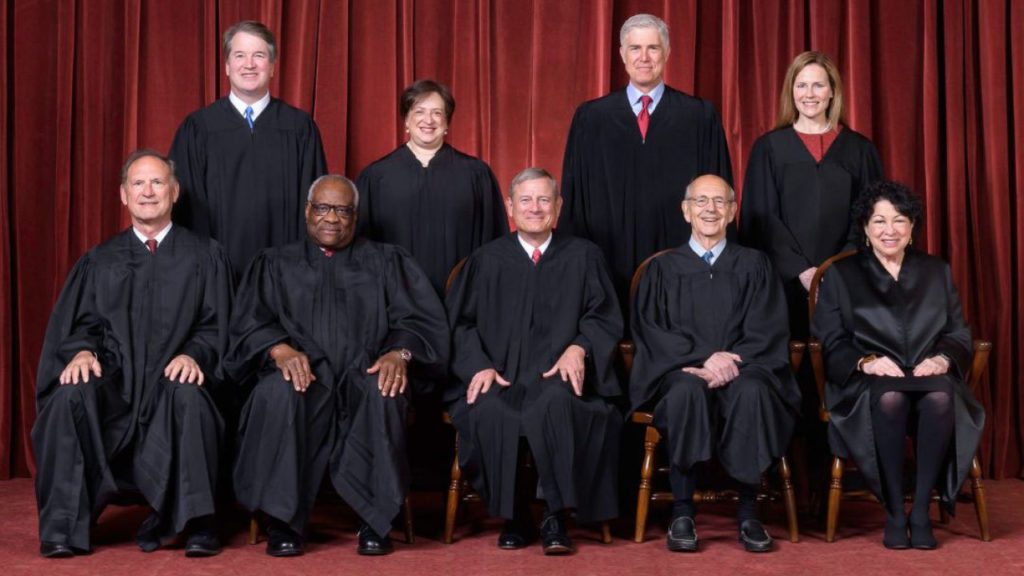The headline read, “Supreme Court Reins in EPA on Clean Power Plan.” On the last day of its recent session, the court released its long-anticipated ruling in West Virginia vs. EPA, four consolidated cases representing 19 states, numerous labor unions, utilities, rural electrics, manufacturers, business groups, and others. The court finally settled the decade-old debate, definitively affirming that EPA has no authority to decide whether Americans get their electricity from coal, oil, wind, solar, or fairy dust.

When I read the court’s ruling, written by Chief Justice John Roberts, I couldn’t help wondering if the Justices sometimes read the Daily Sentinel (they should). On February 12, 2016, I published an opinion, in that newspaper, about the court’s consideration then of the first version of the “clean power plan.” That 2016 column contained, almost verbatim, the same arguments Roberts used in this case, six years later. It described the proposed regulatory scheme as a plan “to totally transform America’s energy industry in ways Congress never authorized,” exactly the conclusion of the recent ruling.
The dispute centered on the Clean Air Act, which gives EPA authority over air pollution, empowering the agency to regulate emissions, through standards applied at power plants and other facilities – not to decide that all energy production must shift from coal to other fuel sources. That shift was the stated intent of the “clean power plan,” promulgated by EPA in 2015. In brief, the U.S. would no longer produce or use coal, its largest source of electricity; the states had one year to show EPA how they would kill their coal industries and transition to other energy sources; or EPA would do it for them.
As I wrote in 2016, “That would give EPA power to regulate a significant portion of the American economy – which Congress never authorized.” I didn’t know the legal term the court uses, called the “major questions doctrine,” but it means the same thing. As Roberts puts it, “We also find it highly unlikely that Congress would leave to agency discretion the decision of how much coal-based generation there should be over the coming decades… A decision of such magnitude and consequence rests with Congress itself, or an agency acting pursuant to a clear delegation from that representative body.”
Congress could easily have done that. Long after greenhouse gas emissions became a thing, Congress considered and rejected such proposals multiple times, including carbon taxes, cap-and-trade schemes, ratification of the Kyoto treaty, and several other related efforts. So, EPA acted unilaterally.
This case reminds agencies that Congress makes the laws here. If the people want a massive shift in national energy policy, they can vote for representatives who will implement it. The court essentially told the EPA, “No one died and left you king.”
Unfortunately, because litigation takes so long, EPA probably got what it wanted, killing the coal industry while the case was pending. This was in a sense the final nail in the coffin of an industry already in free-fall. Between 2007 and 2016, coal generation had declined by almost 40 percent. Some of that was due to market forces, but the decline cannot be separated from the $20 billion annual regulatory burden ($312 billion over time) saddled onto the coal industry by a series of regulations beginning about 2014. The market capitalization of the four largest coal companies was $35 billion in 2011; it has declined by 99 percent since then. There were 1,250 producing coal mines in 2008, barely 400 by 2020.
Western Colorado (my home) had eleven of those mines, producing over $1 billion worth of coal each year, employing over 2,000 people, paying $86 million in royalties, along with $28 million in property, severance, and sales taxes. Half of those mines and half their employees are gone now. They also fueled eight major power plants, all of which are either closed or scheduled to close. Clearly the “war on coal” succeeded, legal authority notwithstanding.
In 2016, the Supreme Court blocked implementation of that original “clean power plan,” a major setback for the Obama EPA Administrator, Gina McCarthy. But the Biden Administration brought McCarthy back as White House “climate czar,” whose first priority was to resurrect that effort, regardless of the fact it had been ruled illegal. The Court’s ruling ends it again, for now, reiterating that regulatory agencies must operate within the authority granted them by law.
I don’t flatter myself that Supreme Court justices read my newspaper columns. But if even I could see this coming six years ago, the smart people who run EPA might have seen it coming, too.




Comments on this entry are closed.